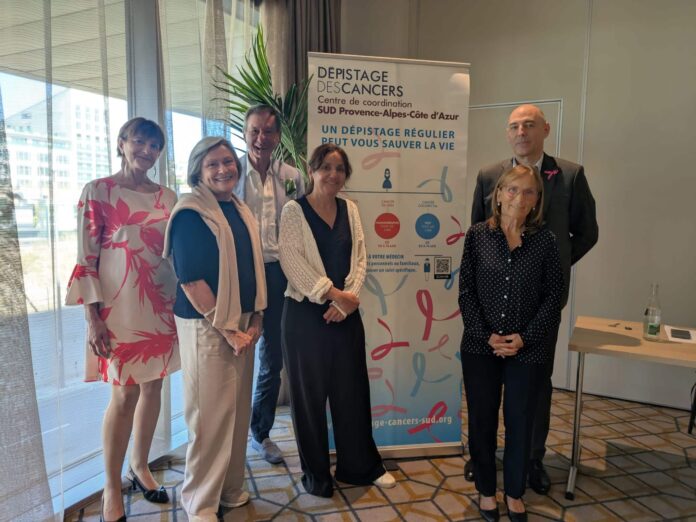The “Pink October 2025” initiative is starting in a few days, and participation in organized breast cancer screening remains alarming in the Alpes-Maritimes. Only 35% of the women concerned undergo screening, compared to a 44% national average. In the face of misinformation on social media, the Regional Center for Cancer Screenings Coordination (CRCDC) South PACA is doubling its efforts with 29 events scheduled in the department to raise awareness and inform.
Every year since 1994, the “Pink October” initiative, aimed at raising awareness among women of all ages about breast cancer screening, takes place all over France. The organized breast cancer screening targets all women between the ages of 50 and 74, who are without symptoms and not at high risk. This early diagnosis prevents heavy treatment, allows for more certain and quicker recovery. The earlier breast cancer is detected, the greater the chances of recovery. Early diagnosis provides a five-year survival rate of nearly 90%.
In the Alpes-Maritimes, participation in organized breast cancer screening is dangerously declining. 44% in 2016 compared to just 35% in 2024. A worrying decrease while this free national program saves lives. Breast cancer is the leading female cancer in France, with more than 61,000 new cases in 2023, and the leading cause of cancer death among women, with 12,000 deaths each year.
Several factors explain this lack of engagement. First, there is a growing distrust of health institutions, access difficulties for some women far from an imaging center, but especially the power of misinformation on social media.
Some false ideas persist: “mammography would be painful and irradiating” or “individual screening (IS) would be better than organized screening (OS).” False, firmly responds Catherine Maestro, a radiologist and second reader since 1989: “the more these false pieces of information are shared, the more they are considered true.” Yet modern mammograms are minimally irradiating and nearly painless. And OS, with its systematic double reading, detects 5 to 6% more cancers compared to individual screening. In the Alpes-Maritimes, OS allowed in 2024 to identify nearly 5% of cancers unnoticed during a first reading.
The CRCDC at the forefront for Pink October 2025
In this context, the CRCDC South PACA is intensifying its mobilization throughout October. Its mission is to inform, reassure, and reach out to those farthest from the initiative.
No fewer than 29 actions are planned in the Alpes-Maritimes, with information stands in cities, awareness workshops, conferences, and also sporting events and charity races. The goal is to reach as many women as possible, including those in precarious situations or with disabilities.
To amplify its message, the CRCDC has multiplied partnerships. With Restos du Cœur 06, to raise awareness among the most vulnerable women. With AMETRA, occupational health services, which will remind female employees of the importance of diagnosis. With Pathé cinemas in Nice, where an awareness spot is shown before each screening.
Beyond these on-the-ground actions, specific training is offered to pharmacists and radiologists to better explain the benefits of OS and reassure against rumors.
The figures speak for themselves, between 2022 and 2023, more than 300,000 mammograms were carried out in PACA. But in the Alpes-Maritimes, there is still immense room for improvement.
Artificial intelligence, an ally in organized screening
While human mobilization is essential, technology could revolutionize the fight against breast cancer. The CRCDC South PACA is currently testing the integration of artificial intelligence into the organized screening initiative.
The principle is simple, the mammogram is first analyzed by a radiologist, then reviewed in the context of a double reading. Now, an AI intervenes to flag potentially suspicious images for doctors, classifying them by risk probability. But beware: “AI does not replace the radiologist; it’s a tool!” insists Patrice Heid, general director of CRCDC South PACA.
Currently in the test phase, the AI does not decide. All images are reviewed, whether considered suspicious or not. But ultimately, if its effectiveness proves equivalent to – or better than – that of a radiologist in a second reading, it could become a major asset. As Patrice Heid reminds us: “it is out of the question to accept that the results of artificial intelligence are inferior to that of a specialized radiologist.”
In 2024, around fifty accredited second readers in PACA conducted nearly 160,000 second readings. Tomorrow, AI could support these experts and further accelerate the process while maintaining the high level of requirement of organized screening.


